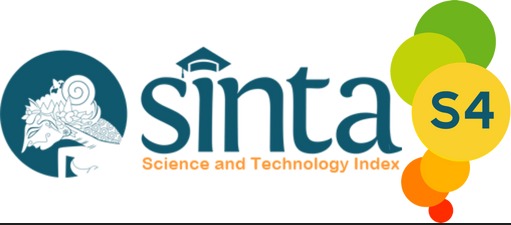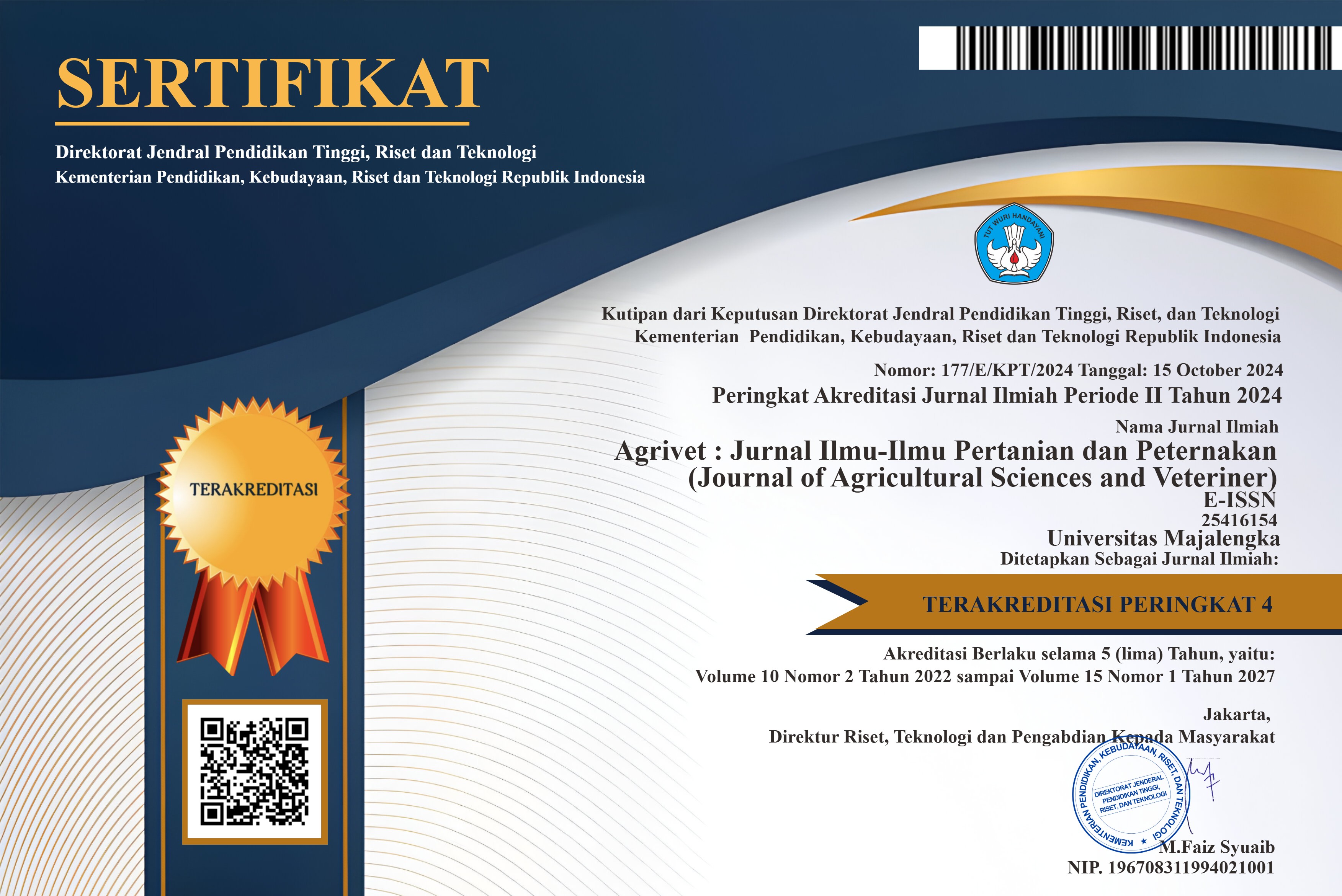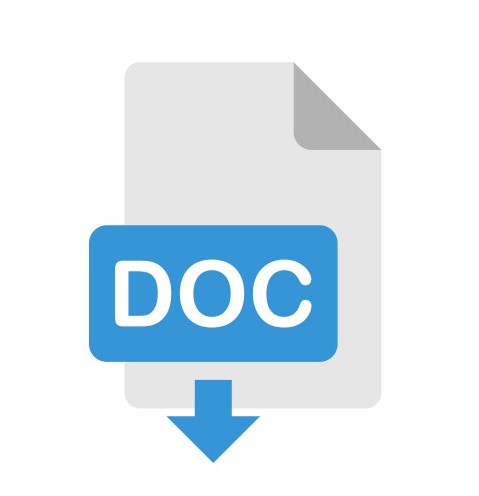Pengujian Ekstrak Kulit Buah Jengkol Sebagai Pestisida Nabati Pada Keong Mas
Examination Of Jengkol Fruit Peel As Natural Pesticide Of Mas Snail
DOI:
https://doi.org/10.31949/agrivet.v10i2.3910Abstract
Mas snail (Pomacea canaliculata) is one of the pests that attack paddy plant. These pests eat young plants until they are ready to be harvested. Therefore an effective method needed to control it. One method that can be used is plant extracts from jengkol fruit peel which can be used as a natural pesticide. The active compounds of saponins in jengkol fruit peel can reduce the activity of digestive enzymes and absorption of snail food. The purpose of this study was to determine the effectiveness of jengkol (Pithecellobium jiringa) peel extract as a natural pesticide against mas snail (Pomacea canaliculata). The research was carried out by making an extract consisting of 1 kg of jengkol fruit peel that blended together with 1 L of distilled water. The extract was then filtered and applied to the golden snail with different concentrations for each treatment, namely 0ml/L (M0), 4ml/L (M1), 5ml/L (M2), 6ml/L (M3) and 7ml/L (M4). The results showed that jengkol fruit peel extract was effective in controlling golden snail pests with the best concentration of 7 ml/L.
Keywords:
Jengkol, extract, pest, mas snail, paddyDownloads
References
Cahyadi, R. (2009). Uji toksisitas akut ekstrak etanol buah pare (Momordica charantia L.) terhadap larva Artemia salina L. dengan metode Brine Shrimp Lethality Test (BSLT). Laporan Akhir Penelitian Karya Tulis Ilmiah. Fakultas Kedokteran UNDIP, Semarang, 44 hlm.
Muhaeni. (2007). Membuat dan memanfaatkan pestisida ramah lingkungan. Agro Media Pustaka. Jakarta.
Setiawati, W., K. Udiarto, dan Soetiarso, T. A. 2008. Pengaruh varietas dan sistem tanam cabai merah terhadap penekanan populasi hama kutu kebul. J. Hort. 18(1), 55-61
Sianturi, E. S. (2009). Uji Efektivitas Beberapa Insektisida Nabati Pada Tanaman Kacang Hijau dan Kacang Panjang Terhadap Hama Maruca testulalis Geyer (Lepidoptera: Pyralidae). Skripsi. Universitas Sumatera Utara Medan.
Sugianti, B., Enjang, H. H., Awliya, P. A., Sri, R., Yeni, A., dan Laili, L. (2014). Daftar mollusca yang berpotensi sebagai spesies asing invasif di indonesia. Jakarta: Kementrerian Kelautan dan Perikanan Badan Karantina Ikan, Pengendalian Mutu dan Keamanan Hasil Perikanan Pusat Karantina Ikan.
Sulistiono. (2012). Cara aman mengendalikan keong emas. fakultas perikanan dan ilmu kelautan Institut Pertanian Bogor (FPIK -IPB). http:// dinpertantph.jatengprov.go.id/artikel110310a.htm. Tanggal akses 22 Sepetember 2013.
Tarigan.R., M. U. Tarigan dan Syahrial, O. (2012). Uji efektifitas larutan kulit jeruk manis dan larutan daun nimba untuk mengendalikan Spodoptera litura F (Lepidoptera: Noctuidae) pada tanaman sawi di lapangan. Jurnal Online Agroekoteknologi 1(1), 172 – 182
Yunidawati W., Darma, B., dan Sengli, B. J. D. (2011). Penggunaan ekstrak biji pinang untuk mengendalikan hama keong mas (Pomacea canaliculata Lamarck) pada tanaman padi. Jurnal Ilmu Pertanian KULTIVAR
Published
How to Cite
Issue
Section
License
Copyright (c) 2022 Nurmaya, Amanda Firmansyah, Rosanna

This work is licensed under a Creative Commons Attribution-ShareAlike 4.0 International License.
An author who publishes in the Jurnal Agrivet agrees to the following terms:
- Author retains the copyright and grants the journal the right of first publication of the work simultaneously licensed under the Creative Commons Attribution-ShareAlike 4.0 License that allows others to share the work with an acknowledgment of the work's authorship and initial publication in this journal
- The author is able to enter into separate, additional contractual arrangements for the non-exclusive distribution of the journal's published version of the work (e.g., post it to an institutional repository or publish it in a book) with the acknowledgment of its initial publication in this journal.
- The author is permitted and encouraged to post his/her work online (e.g., in institutional repositories or on their website) prior to and during the submission process, as it can lead to productive exchanges, as well as earlier and greater citation of the published work












